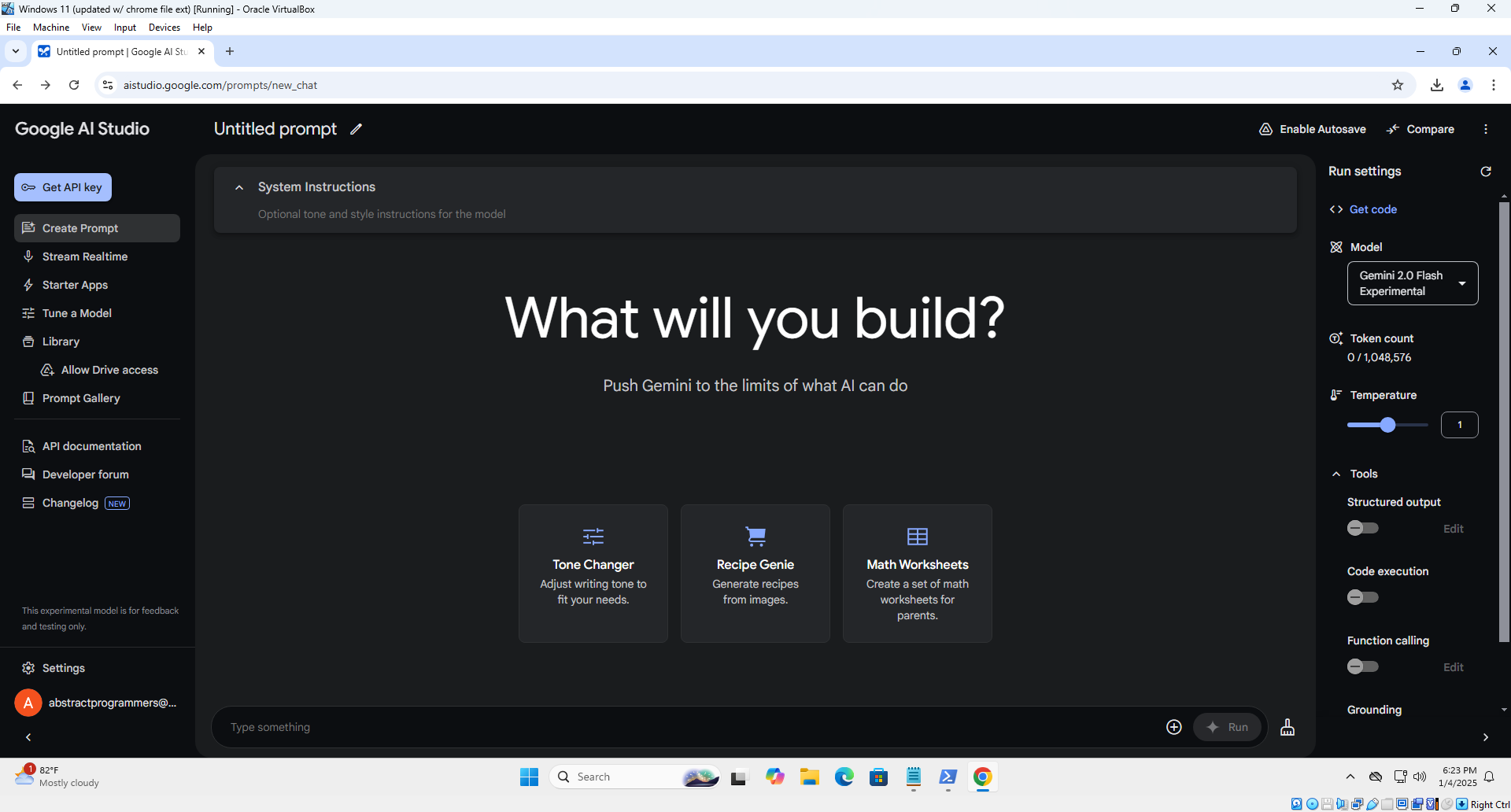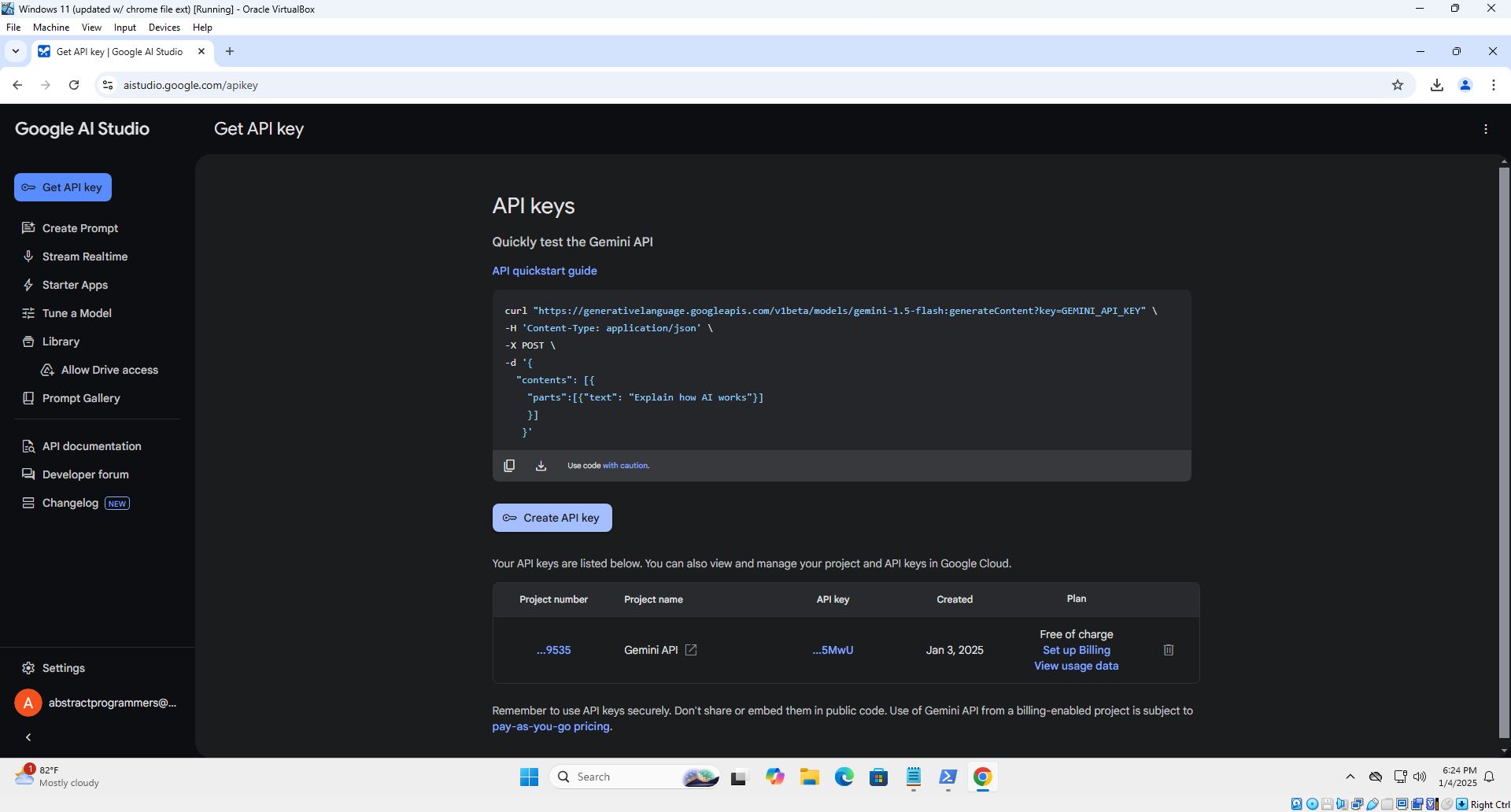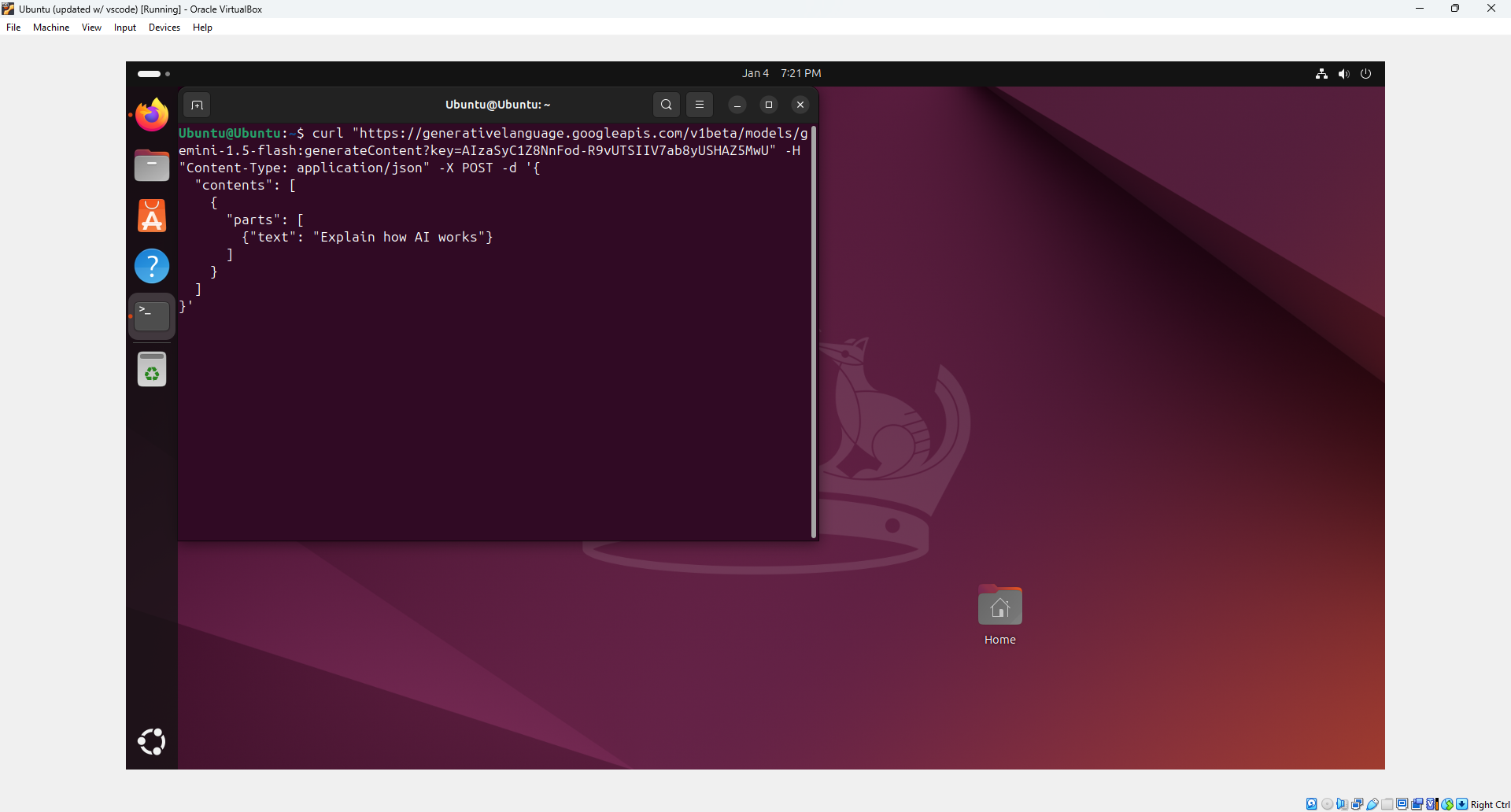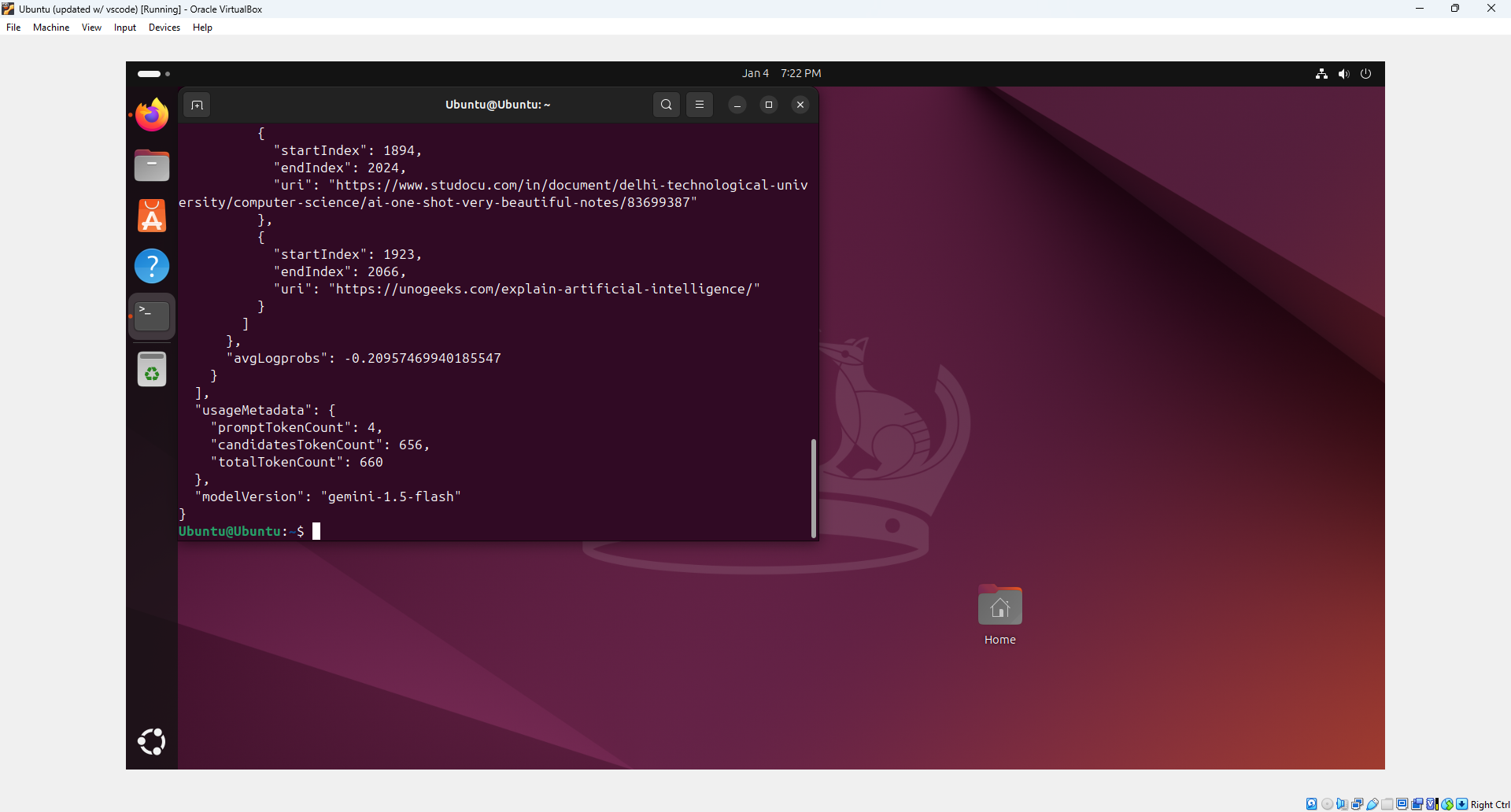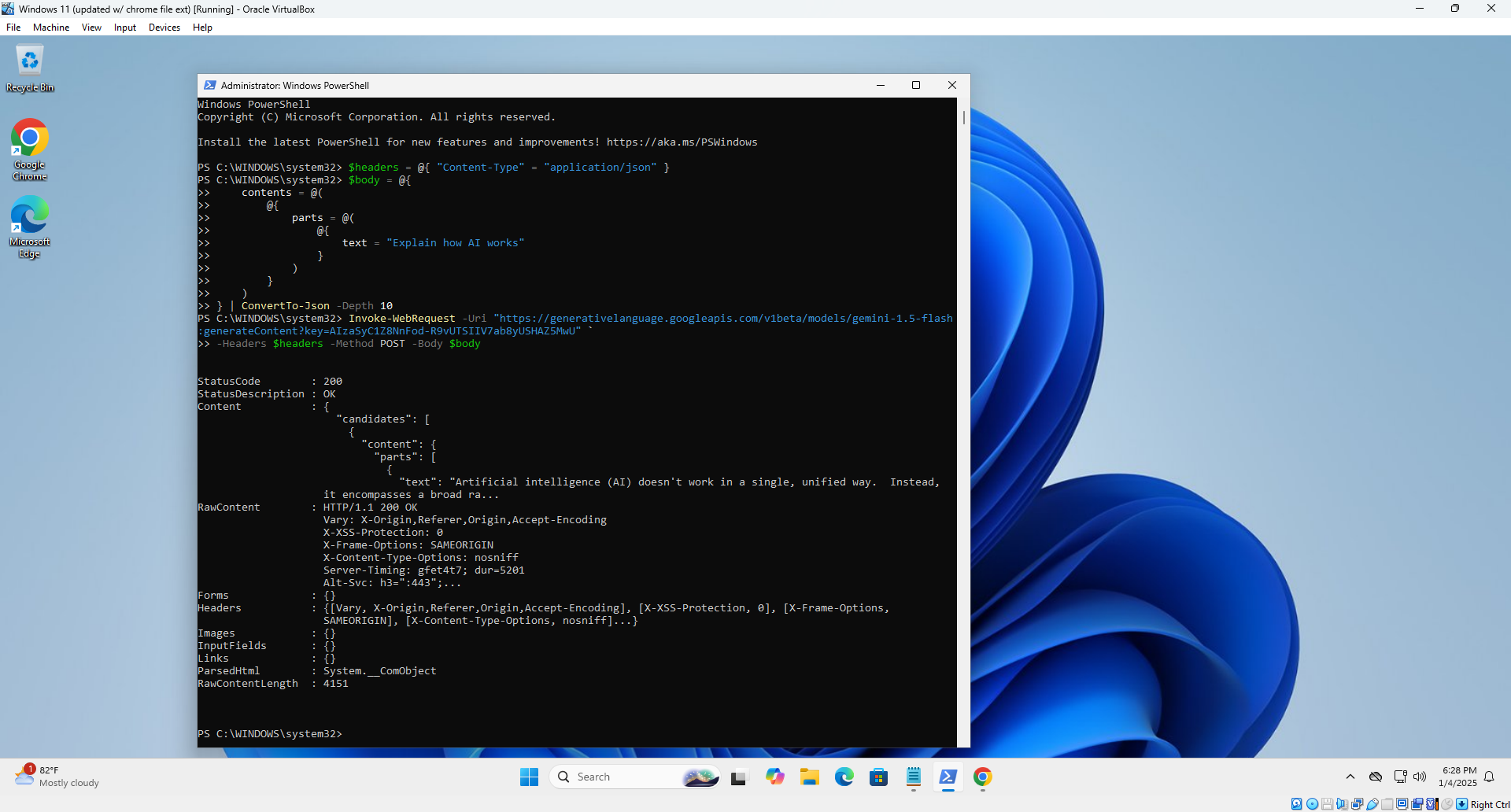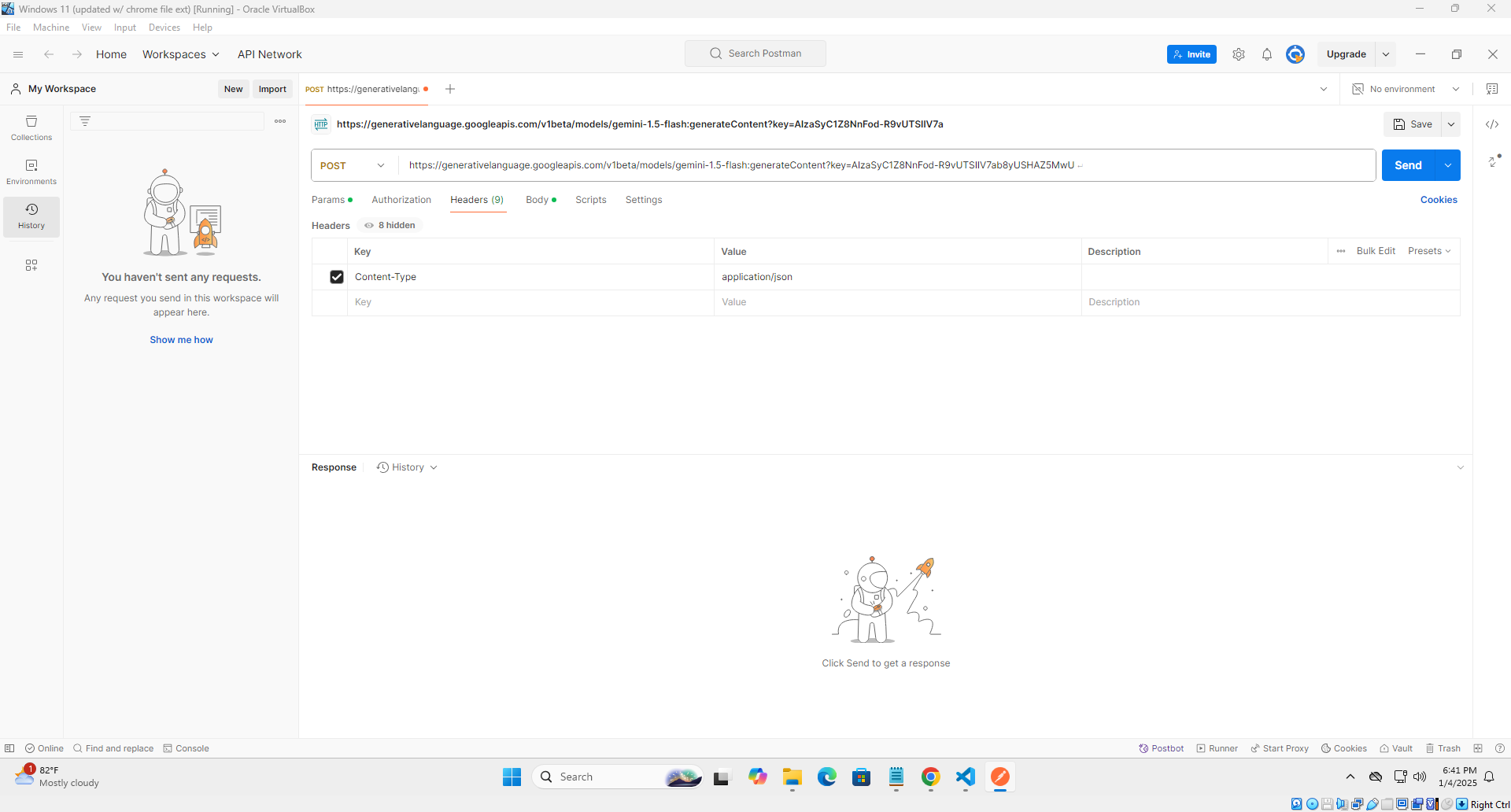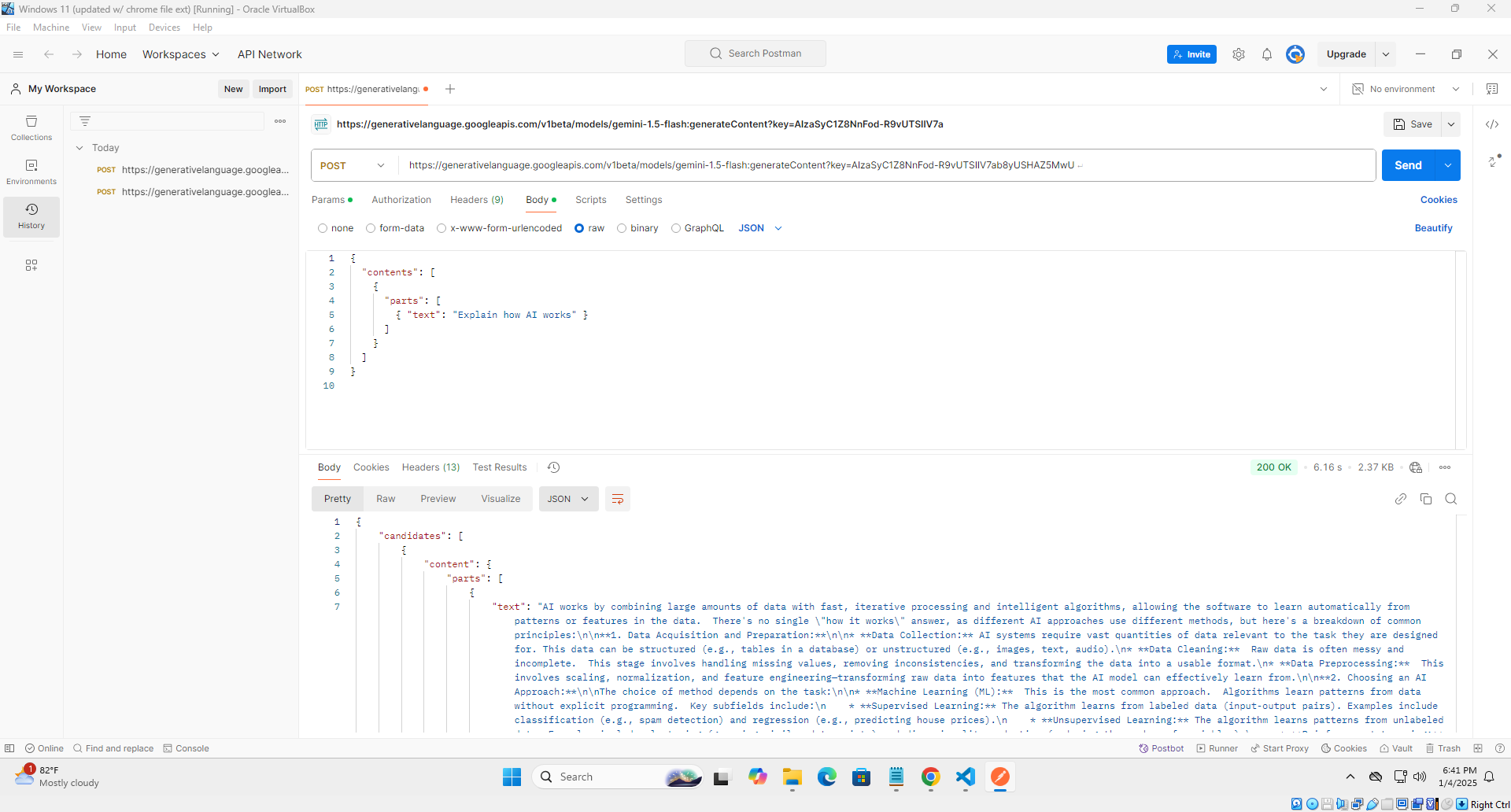-
LeonardQuoft September 23, 2025
-
LeonardQuoft September 23, 2025
-
HermanUsago September 23, 2025
-
Thomasinsem September 24, 2025
-
Keithtiz September 24, 2025
-
KennethfAk September 24, 2025
-
LutherJeogs September 24, 2025
-
Wilfordjoisp September 24, 2025
-
BillyVep September 24, 2025
-
ThomasPhavY September 24, 2025
-
Harrytut September 24, 2025
-
KennethfAk September 24, 2025
-
AlbertThish September 24, 2025
-
Jessieratte September 24, 2025
-
MartinIcect September 24, 2025
-
MarioWhopy September 24, 2025
-
BillyVep September 24, 2025
-
ThomasPhavY September 24, 2025
-
Harrytut September 24, 2025
-
KennethfAk September 24, 2025
-
MartinIcect September 24, 2025
-
MarioWhopy September 24, 2025
-
BillyVep September 24, 2025
-
ThomasPhavY September 24, 2025
-
BillyVep September 24, 2025
-
ThomasPhavY September 24, 2025
-
Harrytut September 25, 2025
-
KennethfAk September 25, 2025
-
LutherJeogs September 25, 2025
-
Wilfordjoisp September 25, 2025
-
AlbertThish September 25, 2025
-
Jessieratte September 25, 2025
-
MartinIcect September 25, 2025
-
BillyVep September 25, 2025
-
ThomasPhavY September 25, 2025
-
Harrytut September 25, 2025
-
KennethfAk September 25, 2025
-
LutherJeogs September 25, 2025
-
BillyVep September 25, 2025
-
ThomasPhavY September 25, 2025
-
Harrytut September 25, 2025
-
KennethfAk September 25, 2025
-
LutherJeogs September 25, 2025
-
TysonBes September 25, 2025
-
Wilfordjoisp September 25, 2025
-
AlbertThish September 25, 2025
-
Jessieratte September 25, 2025
-
MartinIcect September 25, 2025
-
MarioWhopy September 25, 2025
-
BillyVep September 25, 2025
-
ThomasPhavY September 25, 2025
-
Harrytut September 25, 2025
-
KennethfAk September 26, 2025
-
LutherJeogs September 26, 2025
-
MarioWhopy September 26, 2025
-
BillyVep September 26, 2025
-
ThomasPhavY September 26, 2025
-
Harrytut September 26, 2025
-
AlbertThish September 26, 2025
-
Jessieratte September 26, 2025
-
MartinIcect September 26, 2025
-
MarioWhopy September 26, 2025
-
BillyVep September 26, 2025
-
ThomasPhavY September 26, 2025
-
Harrytut September 26, 2025
-
KennethfAk September 26, 2025
-
LutherJeogs September 26, 2025
-
TysonBes September 26, 2025
-
Wilfordjoisp September 26, 2025
-
AlbertThish September 26, 2025
-
BillyVep September 26, 2025
-
ThomasPhavY September 26, 2025
-
Harrytut September 26, 2025
-
KennethfAk September 26, 2025
-
LutherJeogs September 26, 2025
-
TysonBes September 26, 2025
-
Wilfordjoisp September 26, 2025
-
AlbertThish September 26, 2025
-
Jessieratte September 26, 2025
-
MartinIcect September 26, 2025
-
MarioWhopy September 26, 2025
-
BillyVep September 26, 2025
-
ThomasPhavY September 26, 2025
-
Harrytut September 27, 2025
-
TysonBes September 27, 2025
-
Wilfordjoisp September 27, 2025
-
AlbertThish September 27, 2025
-
Jessieratte September 27, 2025
-
MartinIcect September 27, 2025
-
MarioWhopy September 27, 2025
-
BillyVep September 27, 2025
-
ThomasPhavY September 27, 2025
-
Harrytut September 27, 2025
-
KennethfAk September 27, 2025
-
LutherJeogs September 27, 2025
-
TysonBes September 27, 2025
-
Wilfordjoisp September 27, 2025
-
AlbertThish September 27, 2025
-
MartinIcect September 27, 2025
-
BillyVep September 27, 2025
-
ThomasPhavY September 27, 2025
-
Harrytut September 27, 2025
-
KennethfAk September 27, 2025
-
BillyVep September 27, 2025
-
ThomasPhavY September 27, 2025
-
Harrytut September 27, 2025
-
BillyVep September 27, 2025
-
ThomasPhavY September 27, 2025
-
Harrytut September 28, 2025
-
KennethfAk September 28, 2025
-
TysonBes September 28, 2025
-
Wilfordjoisp September 28, 2025
-
AlbertThish September 28, 2025
-
Jessieratte September 28, 2025
-
BillyVep September 28, 2025
-
ThomasPhavY September 28, 2025
-
Jessieratte September 28, 2025
-
MartinIcect September 28, 2025
-
MarioWhopy September 28, 2025
-
BillyVep September 28, 2025
-
ThomasPhavY September 28, 2025
-
Harrytut September 28, 2025
-
KennethfAk September 28, 2025
-
LutherJeogs September 28, 2025
-
TysonBes September 28, 2025
-
Wilfordjoisp September 28, 2025
-
AlbertThish September 28, 2025
-
BillyVep September 28, 2025
-
KennethfAk September 28, 2025
-
LutherJeogs September 28, 2025
-
TysonBes September 28, 2025
-
Wilfordjoisp September 28, 2025
-
BillyVep September 28, 2025
-
ThomasPhavY September 28, 2025
-
Harrytut September 28, 2025
-
BillyVep September 28, 2025
-
LeonardQuoft September 29, 2025
-
Thomasinsem September 29, 2025
-
Thomasinsem September 29, 2025
-
Thomasinsem September 29, 2025
-
Thomasinsem September 29, 2025
-
Thomasinsem September 29, 2025
-
Thomasinsem September 29, 2025
-
Thomasinsem September 29, 2025
-
Thomasinsem September 29, 2025
-
LeonardQuoft September 29, 2025
-
Thomasinsem September 29, 2025
-
Thomasinsem September 29, 2025
-
Thomasinsem September 29, 2025
-
Thomasinsem September 29, 2025
-
Thomasinsem September 29, 2025
-
Thomasinsem September 29, 2025
-
Thomasinsem September 29, 2025
-
Thomasinsem September 29, 2025
-
Thomasinsem September 29, 2025
-
Thomasinsem September 29, 2025
-
Thomasinsem September 29, 2025
-
Thomasinsem September 29, 2025
-
Thomasinsem September 29, 2025
-
lecheniekrasnodarMic September 29, 2025
-
alkogolizmkrasnodarMic September 29, 2025
-
lecheniekrasnodarMic September 30, 2025
-
vivodkrasnodarMic September 30, 2025
-
zapojkrasnodarMic September 30, 2025
-
LeonardQuoft September 30, 2025
-
zapojkrasnodarMic September 30, 2025
-
narkologiyakrasnodarMic September 30, 2025
-
vivodzapojkrasnodarMic September 30, 2025
-
alkogolizmkrasnodarMic September 30, 2025
-
zapojkrasnodarMic October 01, 2025
-
alkogolizmkrasnodarMic October 01, 2025
-
vivodzapojkrasnodarMic October 01, 2025
-
zapojkrasnoyarskMic October 01, 2025
-
alkogolizmkrasnoyarskMic October 01, 2025
-
zapojkrasnoyarskMic October 01, 2025
-
alkogolizmkrasnoyarskMic October 01, 2025
-
narkologiyakrasnoyarskMic October 01, 2025
-
narkologiyakrasnoyarskMic October 01, 2025
-
narkologiyakrasnoyarskMic October 02, 2025
-
vivodzapojkrasnoyarskMic October 02, 2025
-
izzapoyakrasnoyarskMic October 02, 2025
-
lecheniesmolenskMic October 02, 2025
-
narkologiyasmolenskMic October 02, 2025
-
vivodsmolenskMic October 02, 2025
-
vivodsmolenskMic October 02, 2025
-
izzapoyasmolenskMic October 02, 2025
-
alkogolizmsmolenskMic October 02, 2025
-
lechenievladimirMic October 03, 2025
-
alkogolizmsmolenskMic October 03, 2025
-
vivodzapojvladimirMic October 03, 2025
-
vivodzapojvladimirMic October 03, 2025
-
narkologiyavladimirMic October 03, 2025
-
vivodsmolenskMic October 03, 2025
-
narkologiyavladimirMic October 04, 2025
-
NickNor October 04, 2025
-
alkogolizmvladimirMic October 04, 2025
-
narkologiyavladimirMic October 04, 2025
-
DanielSminK October 04, 2025
-
vivodzapojvladimirMic October 04, 2025
-
DanielSminK October 04, 2025
-
vivodzapojvladimirMic October 04, 2025
-
DanielSminK October 04, 2025
-
lechenievladimirMic October 04, 2025
-
JakeNor October 04, 2025
-
izzapoyavladimirMic October 04, 2025
-
izzapoyavladimirMic October 05, 2025
-
vivodtulaMic October 05, 2025
-
lecheniemskMic October 05, 2025
-
vivodtulaMic October 05, 2025
-
GeraldMex October 05, 2025
-
psihiatrmskMic October 05, 2025
-
MichelNor October 05, 2025
-
lechenietulaMic October 05, 2025
-
MichelNor October 05, 2025
-
lechenieastanaMic October 05, 2025
-
vivodvladimirMic October 05, 2025
-
zapojtulaMic October 05, 2025
-
izzapoyaastanaMic October 06, 2025
-
vivodzapojtulaMic October 06, 2025
-
izzapoyaastanaMic October 06, 2025
-
GeraldMex October 06, 2025
-
vivodzapojtulaMic October 06, 2025
-
MichelNor October 06, 2025
-
GeraldMex October 06, 2025
-
lechenietulaMic October 06, 2025
-
narkologiyatulaMic October 06, 2025
-
pansimskMic October 06, 2025
-
izzapoyatulaMic October 07, 2025
-
GeraldMex October 07, 2025
-
zapojkalugaMic October 07, 2025
-
pansimskMic October 07, 2025
-
GeraldMex October 07, 2025
-
lechenietulaMic October 07, 2025
-
izzapoyakalugaMic October 07, 2025
-
pansionatmskMic October 07, 2025
-
GeraldMex October 07, 2025
-
MichelNor October 07, 2025
-
GremNor October 07, 2025
-
izzapoyachelyabinskMic October 07, 2025
-
domprestarelihtulaMic October 07, 2025
-
vivodkalugaMic October 07, 2025
-
narkologiyachelyabinskMic October 07, 2025
-
pansionattulaMic October 07, 2025
-
lechenieminskMic October 08, 2025
-
Bradleyasync October 08, 2025
-
domprestarelihtulaMic October 08, 2025
-
narkologiyachelyabinskMic October 08, 2025
-
vivodminskMic October 08, 2025
-
Bradleyasync October 08, 2025
-
psihmskMic October 08, 2025
-
vivodcherepovecMic October 08, 2025
-
GremNor October 08, 2025
-
vivodzapojminskMic October 08, 2025
-
Bradleyasync October 08, 2025
-
psihiatrmskMic October 08, 2025
-
GremNor October 08, 2025
-
Bradleyasync October 08, 2025
-
narkologiyacherepovecMic October 08, 2025
-
vivodzapojomskMic October 08, 2025
-
GremNor October 08, 2025
-
psikhiatrmskMic October 08, 2025
-
Bradleyasync October 09, 2025
-
vivodzapojomskMic October 09, 2025
-
alkogolizmcherepovecMic October 09, 2025
-
GremNor October 09, 2025
-
lecheniemskMic October 09, 2025
-
Bradleyasync October 09, 2025
-
vivodzapojomskMic October 09, 2025
-
izzapoyairkutskMic October 09, 2025
-
narkologiyatulaMic October 09, 2025
-
GremNor October 09, 2025
-
narkologiyaorenburgMic October 09, 2025
-
narkologiyairkutskMic October 09, 2025
-
GremNor October 09, 2025
-
Bradleyasync October 09, 2025
-
vivodzapojtulaMic October 09, 2025
-
lechenieorenburgMic October 09, 2025
-
alkogolizmirkutskMic October 10, 2025
-
vivodtulaMic October 10, 2025
-
Bradleyasync October 10, 2025
-
psihiatrmskMic October 10, 2025
-
lechenietulaMic October 10, 2025
-
Bradleyasync October 10, 2025
-
GremNor October 10, 2025
-
psihmskMic October 10, 2025
-
Bradleyasync October 10, 2025
-
GremNor October 10, 2025
-
narkologiyatulaMic October 10, 2025
-
alkogolizmorenburgMic October 10, 2025
-
vivodzapojastanaMic October 10, 2025
-
izzapoyatulaMic October 11, 2025
-
izzapoyatulaMic October 11, 2025
-
alkogolizmastanaMic October 11, 2025
-
Bradleyasync October 11, 2025
-
Bradleyasync October 11, 2025
-
pansimskMic October 11, 2025
-
vivodzapojtulaMic October 11, 2025
-
vivodzapojastanaMic October 11, 2025
-
GremNor October 11, 2025
-
Bradleyasync October 11, 2025
-
pansmskMic October 11, 2025
-
zapojtulaMic October 11, 2025
-
pansionatmskMic October 11, 2025
-
GremNor October 11, 2025
-
lecheniekalugaMic October 12, 2025
-
panstulaMic October 12, 2025
-
alkogolizmkalugaMic October 12, 2025
-
Bradleyasync October 12, 2025
-
alkogolizmtulaMic October 12, 2025
-
pansitulaMic October 12, 2025
-
vivodkalugaMic October 12, 2025
-
GremNor October 12, 2025
-
lechenietulaMic October 12, 2025
-
panstulaMic October 12, 2025
-
GremNor October 12, 2025
-
lechenieminskMic October 12, 2025
-
psihiatrmskMic October 13, 2025
-
narkologiyachelyabinskMic October 13, 2025
-
alkogolizmminskMic October 13, 2025
-
psikhiatrmskMic October 13, 2025
-
izzapoyachelyabinskMic October 13, 2025
-
KailNor October 13, 2025
-
lechenieminskMic October 13, 2025
-
psychiatrmskMic October 13, 2025
-
vivodzapojchelyabinskMic October 13, 2025
-
lecheniemskMic October 13, 2025
-
lechenieomskMic October 13, 2025
-
KailNor October 13, 2025
-
zapojcherepovecMic October 14, 2025
-
narkologiyacherepovecMic October 14, 2025
-
GailNor October 15, 2025
-
alkogolizmomskMic October 15, 2025
-
izzapoyakrasnodarMic October 15, 2025
-
vivodomskMic October 16, 2025
-
narkologiyairkutskMic October 16, 2025
-
izzapoyaorenburgMic October 16, 2025
-
narkologiyakrasnodarMic October 16, 2025
-
narkologiyaorenburgMic October 16, 2025
-
vivodzapojirkutskMic October 16, 2025
-
vivodzapojorenburgMic October 16, 2025
-
alkogolizmkrasnodarMic October 17, 2025
-
lechenietulaMic October 17, 2025
-
narkologiyakrasnoyarskMic October 17, 2025
-
lecheniekrasnodarMic October 17, 2025
-
lechenietulaMic October 17, 2025
-
lecheniekrasnoyarskMic October 17, 2025
-
lecheniekrasnodarMic October 17, 2025
-
GailNor October 17, 2025
-
vivodtulaMic October 17, 2025
-
vivodzapojkrasnoyarskMic October 17, 2025
-
zapojkrasnodarMic October 18, 2025
-
zapojsmolenskMic October 18, 2025
-
narkologiyakrasnodarMic October 18, 2025
-
vivodzapojkrasnodarMic October 18, 2025
-
GalilNor October 18, 2025
-
narkologiyakrasnoyarskMic October 19, 2025
-
alkogolizmvladimirMic October 19, 2025
-
lecheniekrasnoyarskMic October 19, 2025
-
vivodzapojvladimirMic October 19, 2025
-
izzapoyakrasnoyarskMic October 19, 2025
-
vivodzapojvladimirMic October 19, 2025
-
zapojvladimirMic October 20, 2025
-
izzapoyasmolenskMic October 20, 2025
-
vivodvladimirMic October 20, 2025
-
narkologiyasmolenskMic October 20, 2025
-
vivodkrasnodarMic October 20, 2025
-
izzapoyasmolenskMic October 20, 2025
-
vivodzapojkrasnodarMic October 20, 2025
-
lechenievladimirMic October 21, 2025
-
izzapoyakrasnodarMic October 21, 2025
-
GalilNor October 21, 2025
-
vivodkrasnoyarskMic October 22, 2025
-
vivodzapojkrasnoyarskMic October 22, 2025
-
Alexih0 October 22, 2025
-
Alexio6 October 22, 2025
-
zapojkrasnoyarskMic October 22, 2025
-
vivodzapojsmolenskMic October 22, 2025
-
vivodzapojvladimirMic October 23, 2025
-
vivodzapojsmolenskMic October 23, 2025
-
Alexnr7 October 23, 2025
-
vivodsmolenskMic October 23, 2025
-
Alexuf3 October 23, 2025
-
GalilNor October 23, 2025
-
Alexmt4 October 23, 2025
-
lechenievladimirMic October 23, 2025
-
Alexaj0 October 23, 2025
-
alkogolizmvladimirMic October 24, 2025
-
Alexkm8 October 24, 2025
-
Alexky5 October 24, 2025
-
narkologiyavladimirMic October 24, 2025
-
Alexfc1 October 24, 2025
-
vivodzapojvladimirMic October 24, 2025
-
Alextr6 October 24, 2025
-
vivodvladimirMic October 24, 2025
-
Alexdv6 October 24, 2025
-
Alexhk4 October 25, 2025
-
Alexje6 October 25, 2025
-
Alexxl0 October 25, 2025
-
Alexdh9 October 25, 2025
-
Alexxj4 October 25, 2025
-
Alexbs2 October 26, 2025
-
Alexld2 October 26, 2025
-
GaalilNor October 26, 2025
-
Alexhz6 October 26, 2025
-
Alexgf8 October 26, 2025
-
GaalilNor October 26, 2025
-
GaalilNor October 27, 2025
-
GaalilNor October 29, 2025
-
Wesleyvonry October 30, 2025
-
Austinlasty October 30, 2025
-
MichaelWeart October 30, 2025
-
Thomasinsem October 30, 2025
-
JacobGyday October 30, 2025
-
DerrickDah October 30, 2025
-
KellyWeeks October 30, 2025
-
Jesseodorb October 30, 2025
-
Wesleyvonry October 30, 2025
-
Austinlasty October 30, 2025
-
Donaldbrisp October 30, 2025
-
GregorySib October 30, 2025
-
JacobGyday October 30, 2025
-
DerrickDah October 30, 2025
-
GaalilNor October 30, 2025
-
MichaelWeart October 30, 2025
-
Thomasinsem October 30, 2025
-
Wesleyvonry October 30, 2025
-
Austinlasty October 30, 2025
-
KellyWeeks October 30, 2025
-
Jesseodorb October 30, 2025
-
JacobGyday October 30, 2025
-
DerrickDah October 30, 2025
-
Donaldbrisp October 30, 2025
-
Wesleyvonry October 30, 2025
-
Austinlasty October 30, 2025
-
MichaelWeart October 30, 2025
-
Thomasinsem October 30, 2025
-
JacobGyday October 30, 2025
-
DerrickDah October 30, 2025
-
Jesseodorb October 30, 2025
-
KellyWeeks October 30, 2025
-
Wesleyvonry October 30, 2025
-
Austinlasty October 30, 2025
-
GregorySib October 30, 2025
-
Donaldbrisp October 30, 2025
-
JacobGyday October 30, 2025
-
DerrickDah October 31, 2025
-
Thomasinsem October 31, 2025
-
MichaelWeart October 31, 2025
-
Wesleyvonry October 31, 2025
-
Austinlasty October 31, 2025
-
Jesseodorb October 31, 2025
-
KellyWeeks October 31, 2025
-
JacobGyday October 31, 2025
-
DerrickDah October 31, 2025
-
Wesleyvonry October 31, 2025
-
Donaldbrisp October 31, 2025
-
GregorySib October 31, 2025
-
Austinlasty October 31, 2025
-
JacobGyday October 31, 2025
-
MichaelWeart October 31, 2025
-
Thomasinsem October 31, 2025
-
Arenda-mebelzu8 October 31, 2025
-
Arenda-mebelwu3 October 31, 2025
-
GerardoHig November 01, 2025
-
Arenda-mebelwl1 November 01, 2025
-
Arenda-mebelnz5 November 01, 2025
-
Arenda-mebelrd3 November 01, 2025
-
Arenda-mebelrw3 November 01, 2025
-
Arenda-mebelzh3 November 01, 2025
-
Arenda-mebelyn2 November 02, 2025
-
Arenda-mebelft5 November 02, 2025
-
Arenda-mebeliw3 November 02, 2025
-
GaalilNor November 03, 2025
-
Bernardreors November 03, 2025
-
Patrickduams November 03, 2025
-
Richardjal November 03, 2025
-
DonaldSop November 03, 2025
-
JamesBug November 03, 2025
-
RobertFlats November 03, 2025
-
HerbertHiemo November 03, 2025
-
EdwardZor November 03, 2025
-
JasonBeato November 04, 2025
-
Richardjal November 04, 2025
-
JamesBug November 04, 2025
-
Patrickduams November 04, 2025
-
Thomasinsem November 04, 2025
-
EdwardZor November 04, 2025
-
HerbertHiemo November 04, 2025
-
JamesBug November 04, 2025
-
JasonBeato November 04, 2025
-
RobertFlats November 04, 2025
-
DonaldSop November 04, 2025
-
Bernardreors November 04, 2025
-
Thomasinsem November 04, 2025
-
Richardjal November 04, 2025
-
EdwardZor November 04, 2025
-
HerbertHiemo November 04, 2025
-
RobertFlats November 04, 2025
-
JamesBug November 04, 2025
-
JasonBeato November 04, 2025
-
Richardjal November 04, 2025
-
Thomasinsem November 04, 2025
-
RobertFlats November 04, 2025
-
EdwardZor November 04, 2025
-
HerbertHiemo November 04, 2025
-
Richardjal November 04, 2025
-
JamesBug November 04, 2025
-
JasonBeato November 04, 2025
-
RobertFlats November 04, 2025
-
Thomasinsem November 04, 2025
-
Patrickduams November 04, 2025
-
Richardjal November 04, 2025
-
DonaldSop November 04, 2025
-
EdwardZor November 04, 2025
-
HerbertHiemo November 04, 2025
-
RobertFlats November 04, 2025
-
JamesBug November 04, 2025
-
JasonBeato November 04, 2025
-
Richardjal November 04, 2025
-
Thomasinsem November 04, 2025
-
Patrickduams November 04, 2025
-
RobertFlats November 04, 2025
-
EdwardZor November 05, 2025
-
HerbertHiemo November 05, 2025
-
Richardjal November 05, 2025
-
JamesBug November 05, 2025
-
RobertFlats November 05, 2025
-
JasonBeato November 05, 2025
-
lechenietulaMic November 05, 2025
-
izzapoyakrasnodarMic November 05, 2025
-
Arenda-mebelfn8 November 05, 2025
-
alkogolizmminskMic November 05, 2025
-
EarnestFrida November 05, 2025
-
Arenda-mebelyt7 November 05, 2025
-
DavidZom November 05, 2025
-
vivodzapojtulaMic November 05, 2025
-
vivodkrasnodarMic November 05, 2025
-
Arenda-mebelfa1 November 05, 2025
-
alkogolizmminskMic November 05, 2025
-
DonaldSop November 05, 2025
-
Arenda-mebelvu0 November 05, 2025
-
alkogolizmtulaMic November 05, 2025
-
vivodzapojomskMic November 05, 2025
-
Arenda-mebelsb8 November 05, 2025
-
vivodzapojchelyabinskMic November 06, 2025
-
Arenda-mebelck9 November 06, 2025
-
alkogolizmkrasnodarMic November 06, 2025
-
CoreyAgick November 06, 2025
-
narkologiyaomskMic November 06, 2025
-
Arenda-mebeloj6 November 06, 2025
-
mellstroy.icu November 06, 2025
-
lecheniechelyabinskMic November 06, 2025
-
mellstroy.icu November 06, 2025
-
mellstroy.icu November 06, 2025
-
alkogolizmkrasnodarMic November 06, 2025
-
alkogolizmomskMic November 06, 2025
-
vivodzapojchelyabinskMic November 06, 2025
-
vivodtulaMic November 06, 2025
-
DonaldSop November 06, 2025
-
zapojorenburgMic November 06, 2025
-
zapojcherepovecMic November 06, 2025
-
DonaldSop November 06, 2025
-
lechenietulaMic November 06, 2025
-
vivodzapojcherepovecMic November 07, 2025
-
narkologiyaorenburgMic November 07, 2025
-
spb.erobodio.ru November 07, 2025
-
zapojtulaMic November 07, 2025
-
spb.erobodio.ru November 07, 2025
-
alkogolizmcherepovecMic November 07, 2025
-
spb.erobodio.ru November 07, 2025
-
narkologiyaorenburgMic November 07, 2025
-
alkogolizmsmolenskMic November 07, 2025
-
DonaldSop November 07, 2025
-
vivodtulaMic November 07, 2025
-
DonaldSop November 07, 2025
-
izzapoyairkutskMic November 07, 2025
-
alkogolizmsmolenskMic November 07, 2025
-
vivodzapojsmolenskMic November 08, 2025
-
Harryweecy November 08, 2025
-
vivodtulaMic November 08, 2025
-
zapojkalugaMic November 08, 2025
-
alkogolizmsmolenskMic November 08, 2025
-
pansmskMic November 08, 2025
-
izzapoyakalugaMic November 08, 2025
-
zapojsmolenskMic November 08, 2025
-
narkologiyakalugaMic November 08, 2025
-
domprestarelihmskMic November 08, 2025
-
vivodkrasnodarMic November 09, 2025
-
pansimskMic November 09, 2025
-
lecheniekrasnodarMic November 09, 2025
-
narkologiyatulaMic November 09, 2025
-
pansionattulaMic November 09, 2025
-
narkologiyakrasnodarMic November 09, 2025
-
pansitulaMic November 09, 2025
-
DonaldSop November 09, 2025
-
lechenietulaMic November 09, 2025
-
alkogolizmkrasnodarMic November 09, 2025
-
DonaldSop November 09, 2025
-
pansitulaMic November 09, 2025
-
vivodzapojtulaMic November 09, 2025
-
lecheniekrasnodarMic November 10, 2025
-
hxxxthbgsh November 10, 2025
-
ThomaselinK November 10, 2025
-
psihiatrmskMic November 10, 2025
-
alkogolizmvladimirMic November 10, 2025
-
Byrongoold November 10, 2025
-
Jasonhurdy November 10, 2025
-
LannySwite November 10, 2025
-
Davidinova November 10, 2025
-
lecheniekrasnoyarskMic November 10, 2025
-
ShawnMup November 10, 2025
-
Travisawaks November 10, 2025
-
Jasonhurdy November 10, 2025
-
Timothyvem November 10, 2025
-
HenryGek November 10, 2025
-
Thomasinsem November 10, 2025
-
Stevendyelt November 10, 2025
-
LannySwite November 10, 2025
-
JamesrAivy November 10, 2025
-
Byrongoold November 10, 2025
-
lecheniemskMic November 10, 2025
-
Ronniekam November 10, 2025
-
vivodvladimirMic November 10, 2025
-
WilliamMop November 10, 2025
-
Jasonhurdy November 10, 2025
-
ThomasDah November 10, 2025
-
Davidinova November 10, 2025
-
alkogolizmkrasnoyarskMic November 10, 2025
-
RobertSes November 10, 2025
-
LannySwite November 10, 2025
-
Timothyvem November 10, 2025
-
Travisawaks November 10, 2025
-
Rolandosumma November 10, 2025
-
psychiatrmskMic November 10, 2025
-
JamesrAivy November 10, 2025
-
Byrongoold November 10, 2025
-
Jasonhurdy November 10, 2025
-
vivodvladimirMic November 10, 2025
-
Thomasinsem November 10, 2025
-
vivodkrasnoyarskMic November 10, 2025
-
Davidinova November 10, 2025
-
ThomasDah November 10, 2025
-
LannySwite November 10, 2025
-
Thomasinsem November 10, 2025
-
Timothyvem November 11, 2025
-
Travisawaks November 11, 2025
-
Jasonhurdy November 11, 2025
-
psikhiatrmskMic November 11, 2025
-
Thomasinsem November 11, 2025
-
alkogolizmkrasnoyarskMic November 11, 2025
-
Byrongoold November 11, 2025
-
JamesrAivy November 11, 2025
-
LannySwite November 11, 2025
-
vivodvladimirMic November 11, 2025
-
Thomasinsem November 11, 2025
-
ThomasDah November 11, 2025
-
Davidinova November 11, 2025
-
Jasonhurdy November 11, 2025
-
nsk.sibirki.gold November 11, 2025
-
Thomasinsem November 11, 2025
-
psihiatrmskMic November 11, 2025
-
Timothyvem November 11, 2025
-
Travisawaks November 11, 2025
-
DonaldHausy November 11, 2025
-
LannySwite November 11, 2025
-
alkogolizmkrasnoyarskMic November 11, 2025
-
Thomasinsem November 11, 2025
-
BrainTef November 11, 2025
-
izzapoyavladimirMic November 11, 2025
-
JamesrAivy November 11, 2025
-
Byrongoold November 11, 2025
-
Jasonhurdy November 11, 2025
-
Michaelevatt November 11, 2025
-
Thomasinsem November 11, 2025
-
Davidinova November 11, 2025
-
ThomasDah November 11, 2025
-
LannySwite November 11, 2025
-
Edwardwep November 11, 2025
-
Thomasinsem November 11, 2025
-
lecheniemskMic November 11, 2025
-
Tommytic November 11, 2025
-
Timothyvem November 11, 2025
-
Travisawaks November 11, 2025
-
vivodzapojkrasnoyarskMic November 11, 2025
-
Jasonhurdy November 11, 2025
-
WilliamMop November 11, 2025
-
DonaldSop November 11, 2025
-
narkologiyavladimirMic November 11, 2025
-
Byrongoold November 11, 2025
-
JamesrAivy November 11, 2025
-
LannySwite November 11, 2025
-
RobertSes November 11, 2025
-
Davidinova November 11, 2025
-
ThomasDah November 11, 2025
-
Jasonhurdy November 11, 2025
-
vivodastanaMic November 11, 2025
-
vivodzapojminskMic November 11, 2025
-
Rolandosumma November 11, 2025
-
Timothyvem November 11, 2025
-
Travisawaks November 11, 2025
-
LannySwite November 11, 2025
-
alkogolizmvladimirMic November 11, 2025
-
Thomasinsem November 12, 2025
-
Byrongoold November 12, 2025
-
JamesrAivy November 12, 2025
-
Jasonhurdy November 12, 2025
-
Thomasinsem November 12, 2025
-
narkologiyatulaMic November 12, 2025
-
lechenieastanaMic November 12, 2025
-
Davidinova November 12, 2025
-
ThomasDah November 12, 2025
-
LannySwite November 12, 2025
-
Thomasinsem November 12, 2025
-
Timothyvem November 12, 2025
-
Travisawaks November 12, 2025
-
zapojvladimirMic November 12, 2025
-
Jasonhurdy November 12, 2025
-
JasonAwage November 12, 2025
-
Byrongoold November 12, 2025
-
JamesrAivy November 12, 2025
-
ManuelLug November 12, 2025
-
vivodtulaMic November 12, 2025
-
LannySwite November 12, 2025
-
vivodastanaMic November 12, 2025
-
Thomasinsem November 12, 2025
-
CarrollExcus November 12, 2025
-
Davidinova November 12, 2025
-
ThomasDah November 12, 2025
-
Jasonhurdy November 12, 2025
-
Thomasinsem November 12, 2025
-
zapojvladimirMic November 12, 2025
-
Travisawaks November 12, 2025
-
LannySwite November 12, 2025
-
Thomasinsem November 12, 2025
-
vivodtulaMic November 12, 2025
-
lecheniekrasnodarMic November 12, 2025
-
JamesrAivy November 12, 2025
-
Jasonhurdy November 12, 2025
-
Thomasinsem November 12, 2025
-
DonaldSop November 12, 2025
-
ThomasDah November 12, 2025
-
LannySwite November 12, 2025
-
WilliamMop November 12, 2025
-
Travisawaks November 12, 2025
-
Jasonhurdy November 12, 2025
-
zapojvladimirMic November 12, 2025
-
RobertSes November 12, 2025
-
izzapoyachelyabinskMic November 12, 2025
-
JamesrAivy November 12, 2025
-
LannySwite November 12, 2025
-
lecheniekrasnodarMic November 12, 2025
-
DonaldSop November 12, 2025
-
MyronruigO November 13, 2025
-
Gordonpen November 13, 2025
-
Donaldvop November 13, 2025
-
zapojminskMic November 13, 2025
-
narkologiyachelyabinskMic November 13, 2025
-
GordonZed November 13, 2025
-
MyronruigO November 13, 2025
-
HectorPrinc November 13, 2025
-
vivodzapojkrasnodarMic November 13, 2025
-
FabianBoibe November 13, 2025
-
Sonnymex November 13, 2025
-
Jeffreysputh November 13, 2025
-
lecheniechelyabinskMic November 13, 2025
-
Donaldvop November 13, 2025
-
Gordonpen November 13, 2025
-
ArthurElugh November 13, 2025
-
lechenieminskMic November 13, 2025
-
GordonZed November 13, 2025
-
HectorPrinc November 13, 2025
-
MyronruigO November 13, 2025
-
FabianBoibe November 13, 2025
-
ArthurElugh November 13, 2025
-
Sonnymex November 13, 2025
-
zapojcherepovecMic November 13, 2025
-
Donaldvop November 13, 2025
-
Gordonpen November 13, 2025
-
MyronruigO November 13, 2025
-
lechenieomskMic November 13, 2025
-
lecheniekrasnodarMic November 13, 2025
-
HectorPrinc November 13, 2025
-
GordonZed November 13, 2025
-
ArthurElugh November 13, 2025
-
FabianBoibe November 13, 2025
-
Sonnymex November 13, 2025
-
MyronruigO November 13, 2025
-
alkogolizmcherepovecMic November 13, 2025
-
Donaldvop November 13, 2025
-
Gordonpen November 13, 2025
-
ArthurElugh November 13, 2025
-
narkologiyaomskMic November 14, 2025
-
vivodzapojtulaMic November 14, 2025
-
HectorPrinc November 14, 2025
-
GordonZed November 14, 2025
-
MyronruigO November 14, 2025
-
vivodcherepovecMic November 14, 2025
-
FabianBoibe November 14, 2025
-
ArthurElugh November 14, 2025
-
Sonnymex November 14, 2025
-
StanleyHox November 14, 2025
-
Donaldvop November 14, 2025
-
MyronruigO November 14, 2025
-
Gordonpen November 14, 2025
-
vivodzapojomskMic November 14, 2025
-
narkologiyatulaMic November 14, 2025
-
MathewGot November 14, 2025
-
HectorPrinc November 14, 2025
-
GordonZed November 14, 2025
-
ArthurElugh November 14, 2025
-
alkogolizmirkutskMic November 14, 2025
-
DavidFlier November 14, 2025
-
FabianBoibe November 14, 2025
-
Sonnymex November 14, 2025
-
MyronruigO November 14, 2025
-
Blaineper November 14, 2025
-
KelleyDOp November 14, 2025
-
izzapoyaorenburgMic November 14, 2025
-
Donaldvop November 14, 2025
-
Gordonpen November 14, 2025
-
ArthurElugh November 14, 2025
-
Kevinjew November 14, 2025
-
lechenieirkutskMic November 14, 2025
-
HectorPrinc November 14, 2025
-
GordonZed November 14, 2025
-
MyronruigO November 14, 2025
-
FabianBoibe November 14, 2025
-
ArthurElugh November 14, 2025
-
Sonnymex November 14, 2025
-
narkologiyaorenburgMic November 14, 2025
-
vivodzapojtulaMic November 14, 2025
-
MyronruigO November 14, 2025
-
Donaldvop November 14, 2025
-
Gordonpen November 14, 2025
-
alkogolizmirkutskMic November 14, 2025
-
HectorPrinc November 14, 2025
-
GordonZed November 14, 2025
-
ArthurElugh November 14, 2025
-
FabianBoibe November 15, 2025
-
MyronruigO November 15, 2025
-
Sonnymex November 15, 2025
-
izzapoyaorenburgMic November 15, 2025
-
alkogolizmkalugaMic November 15, 2025
-
narkologiyatulaMic November 15, 2025
-
Donaldvop November 15, 2025
-
ArthurElugh November 15, 2025
-
Gordonpen November 15, 2025
-
HectorPrinc November 15, 2025
-
MyronruigO November 15, 2025
-
GordonZed November 15, 2025
-
ArthurElugh November 15, 2025
-
Sonnymex November 15, 2025
-
FabianBoibe November 15, 2025
-
izzapoyakalugaMic November 15, 2025
-
alkogolizmsmolenskMic November 15, 2025
-
narkologiyatulaMic November 15, 2025
-
MyronruigO November 15, 2025
-
Donaldvop November 15, 2025
-
Gordonpen November 15, 2025
-
vivodkalugaMic November 15, 2025
-
vivodsmolenskMic November 15, 2025
-
alkogolizmtulaMic November 15, 2025
-
vivodkrasnodarMic November 15, 2025
-
DonaldSop November 15, 2025
-
zapojsmolenskMic November 16, 2025
-
pansionatmskMic November 16, 2025
-
lecheniekrasnodarMic November 16, 2025
-
vivodzapojkrasnodarMic November 16, 2025
-
pansimskMic November 16, 2025
-
Rogerelire November 16, 2025
-
izzapoyasmolenskMic November 16, 2025
-
DonaldSop November 16, 2025
-
pansmskMic November 16, 2025
-
vivodkrasnodarMic November 16, 2025
-
vivodzapojsmolenskMic November 16, 2025
-
pansionattulaMic November 16, 2025
-
alkogolizmkrasnoyarskMic November 17, 2025
-
izzapoyatulaMic November 17, 2025
-
Charlesmuh November 17, 2025
-
pansionattulaMic November 17, 2025
-
alkogolizmkrasnoyarskMic November 17, 2025
-
ScottMer November 17, 2025
-
lechenietulaMic November 17, 2025
-
Michaelfouri November 17, 2025
-
zapojkrasnoyarskMic November 17, 2025
-
Anthonyamacy November 17, 2025
-
panstulaMic November 17, 2025
-
vodkabet.ink November 17, 2025
-
lechenietulaMic November 17, 2025
-
vivodzapojkrasnoyarskMic November 17, 2025
-
psychiatrmskMic November 17, 2025
-
izzapoyavladimirMic November 18, 2025
-
zapojkrasnoyarskMic November 18, 2025
-
psihiatrmskMic November 18, 2025
-
HermandUm November 18, 2025
-
alkogolizmvladimirMic November 18, 2025
-
SpencerDardy November 18, 2025
-
lecheniekrasnoyarskMic November 18, 2025
-
syyka-games.fit November 18, 2025
-
syyka-games.fit November 18, 2025
-
lecheniemskMic November 18, 2025
-
narkologiyavladimirMic November 18, 2025
-
lechenieminskMic November 18, 2025
-
alkogolizmvladimirMic November 19, 2025
-
psihmskMic November 19, 2025
-
zapojtulaMic November 19, 2025
-
PatrickvEw November 19, 2025
-
Jesusheemo November 19, 2025
-
HaroldJeamy November 19, 2025
-
narkologiyavladimirMic November 19, 2025
-
SteveEffig November 19, 2025
-
vivodzapojtulaMic November 19, 2025
-
psihiatrmskMic November 19, 2025
-
AustralianGameShowsDroxy November 19, 2025
-
Keithved November 19, 2025
-
Stevenlaple November 19, 2025
-
Drinkio November 19, 2025
-
DonaldSop November 19, 2025
-
lechenievladimirMic November 19, 2025
-
vivodzapojtulaMic November 19, 2025
-
psihmskMic November 19, 2025
-
izzapoyachelyabinskMic November 20, 2025
-
izzapoyavladimirMic November 20, 2025
-
alkogolizmastanaMic November 20, 2025
-
JamesSiz November 20, 2025
-
vivodzapojchelyabinskMic November 20, 2025
-
RickieQuIte November 20, 2025
-
onion-games.fit November 20, 2025
-
zapojchelyabinskMic November 20, 2025
-
narkologiyaastanaMic November 20, 2025
-
DonaldSop November 20, 2025
-
zapojvladimirMic November 20, 2025
-
izzapoyacherepovecMic November 20, 2025
-
narkologiyaastanaMic November 20, 2025
-
GratiaVitaeDroxy November 21, 2025
-
izzapoyavladimirMic November 21, 2025
-
vivodzapojcherepovecMic November 21, 2025
-
Williamhon November 21, 2025
-
lecheniecherepovecMic November 21, 2025
-
DeweyHof November 21, 2025
-
lev-bet.ink November 21, 2025
-
narkologiyairkutskMic November 21, 2025
-
DonaldSop November 21, 2025
-
zapojirkutskMic November 21, 2025
-
alkogolizmkalugaMic November 22, 2025
-
narkologiyakalugaMic November 22, 2025
-
izzapoyakalugaMic November 22, 2025
-
izzapoyakrasnodarMic November 23, 2025
-
zapojkrasnodarMic November 23, 2025
-
zapojkrasnodarMic November 23, 2025
-
narkologiyakrasnodarMic November 23, 2025
-
MetabolicFreedomDroxy November 24, 2025
-
lecheniekrasnodarMic November 24, 2025
-
DouglasCok November 24, 2025
-
vivodzapojkrasnoyarskMic November 24, 2025
-
LarryCub November 24, 2025
-
MichaelVob November 24, 2025
-
narkologiyakrasnoyarskMic November 24, 2025
-
mob.sibirki.cc November 24, 2025
-
narkologiyakrasnoyarskMic November 24, 2025
-
vivodzapojkrasnoyarskMic November 25, 2025
-
Robertbup November 25, 2025
-
vivodzapojkrasnoyarskMic November 25, 2025
-
RoberthAl November 25, 2025
-
DavidPitte November 25, 2025
-
joy-games.space November 25, 2025
-
vivodkrasnoyarskMic November 25, 2025
-
Arenda-mebeli-wq0 November 25, 2025
-
vivodzapojtulaMic November 26, 2025
-
Larryref November 26, 2025
-
Arenda-mebeli-bp8 November 26, 2025
-
RobertTycle November 26, 2025
-
joycasino-now.space November 26, 2025
-
joycasino-now.space November 26, 2025
-
Arenda-mebeli-uw3 November 26, 2025
-
narkologiyatulaMic November 26, 2025
-
Arenda-mebeli-pb5 November 26, 2025
-
zapojchelyabinskMic November 26, 2025
-
Arenda-mebeli-qk5 November 26, 2025
-
Arenda-mebeli-jb8 November 26, 2025
-
narkologiyachelyabinskMic November 27, 2025
-
Arenda-mebeli-kn6 November 27, 2025
-
Arenda-mebeli-bm4 November 27, 2025
-
BobbyLaw November 27, 2025
-
narkologiyachelyabinskMic November 27, 2025
-
Arenda-mebeli-di2 November 27, 2025
-
GeorgeRer November 27, 2025
-
Javiergah November 27, 2025
-
ErnestBum November 27, 2025
-
Arenda-mebeli-ip4 November 27, 2025
-
izzapoyacherepovecMic November 27, 2025
-
Andrewnax November 27, 2025
-
DavidAmaro November 27, 2025
-
Arenda-mebeli-lk3 November 27, 2025
-
pinco-now.space November 27, 2025
-
Arenda-mebeli-pf5 November 27, 2025
-
narkologiyacherepovecMic November 27, 2025
-
Arenda-mebeli-al2 November 27, 2025
-
Arenda-mebeli-ee0 November 27, 2025
-
alkogolizmcherepovecMic November 27, 2025
-
Arenda-mebeli-ei9 November 28, 2025
-
Arenda-mebeli-kj7 November 28, 2025
-
vivodirkutskMic November 28, 2025
-
Byroninism November 28, 2025
-
Arenda-mebeli-ow1 November 28, 2025
-
Charlesnug November 28, 2025
-
Jamessmalm November 28, 2025
-
alkogolizmirkutskMic November 28, 2025
-
VictorWof November 28, 2025
-
Perrytwino November 28, 2025
-
Arenda-mebeli-hg7 November 28, 2025
-
Jeremyvob November 28, 2025
-
lechenieirkutskMic November 28, 2025
-
Arenda-mebeli-vy7 November 28, 2025
-
vivodzapojkalugaMic November 28, 2025
-
Arenda-mebeli-jr2 November 28, 2025
-
Arenda-mebeli-ku8 November 29, 2025
-
narkologiyakalugaMic November 29, 2025
-
Arenda-mebeli-cy7 November 29, 2025
-
Arenda-mebeli-nn1 November 29, 2025
-
Arenda-mebeli-kp3 November 29, 2025
-
vivodkalugaMic November 29, 2025
-
Arenda-mebeli-bv8 November 29, 2025
-
Arenda-mebeli-md9 November 29, 2025
-
lecheniekrasnodarMic November 29, 2025
-
Arenda-mebeli-fi8 November 29, 2025
-
Arenda-mebeli-fy7 November 29, 2025
-
Arenda-mebeli-lr7 November 29, 2025
-
alkogolizmkrasnodarMic November 29, 2025
-
Arenda-mebeli-ne2 November 30, 2025
-
Arenda-mebeli-ug7 November 30, 2025
-
narkologiyakrasnodarMic November 30, 2025
-
Arenda-mebeli-bz2 November 30, 2025
-
Arenda-mebeli-gj5 November 30, 2025
-
Arenda-mebeli-dj8 November 30, 2025
-
narkologiyakrasnodarMic November 30, 2025
-
Arenda-mebeli-jx3 November 30, 2025
-
Arenda-mebeli-zw7 November 30, 2025
-
Arenda-mebeli-fm5 November 30, 2025
-
vivodzapojkrasnodarMic November 30, 2025
-
Arenda-mebeli-yw1 November 30, 2025
-
Arenda-mebeli-xv8 November 30, 2025
-
narkologiyakrasnoyarskMic November 30, 2025
-
Arenda-mebeli-uu5 December 01, 2025
-
narkologiyakrasnoyarskMic December 01, 2025
-
Arenda-mebeli-gx8 December 01, 2025
-
Matthewanype December 01, 2025
-
Stevensox December 01, 2025
-
JaimeKed December 01, 2025
-
DouglasTag December 01, 2025
-
Ronaldnar December 01, 2025
-
CarlosWainc December 01, 2025
-
mebeltrading.ru-ti5 December 01, 2025
-
mebeltrading.ru-ba8 December 01, 2025
-
mebeltrading.ru-qo0 December 01, 2025
-
mebeltrading.ru-qt6 December 02, 2025
-
mebeltrading.ru-pf9 December 02, 2025
-
mebeltrading.ru-fg6 December 02, 2025
-
Jeremytus December 02, 2025
-
WilliamGom December 02, 2025
-
mebeltrading.ru-ls2 December 02, 2025
-
DonaldBoild December 02, 2025
-
mebeltrading.ru-pg4 December 02, 2025
-
RobertAsymn December 02, 2025
-
DonaldSop December 02, 2025
-
Frankloyab December 02, 2025
-
mebeltrading.ru-ox5 December 02, 2025
-
mebeltrading.ru-jv9 December 02, 2025
-
mebeltrading.ru-nl6 December 02, 2025
-
mebeltrading.ru-ov4 December 02, 2025
-
mebeltrading.ru-qj4 December 03, 2025
-
mebeltrading.ru-sy7 December 03, 2025
-
mebeltrading.ru-tp1 December 03, 2025
-
Tommierof December 03, 2025
-
WayneMed December 03, 2025
-
mebeltrading.ru-qj8 December 03, 2025
-
mebeltrading.ru-vo9 December 03, 2025
-
mebeltrading.ru-hv8 December 03, 2025
-
mebeltrading.ru-ji8 December 03, 2025
-
mebeltrading.ru-vg3 December 03, 2025
-
mebeltrading.ru-gn0 December 04, 2025
-
mebeltrading.ru-es5 December 04, 2025
-
mebeltrading.ru-lw9 December 04, 2025
-
Ralphappot December 04, 2025
-
Williamdab December 04, 2025
-
mebeltrading.ru-wo2 December 04, 2025
-
JosephTox December 04, 2025
-
mebeltrading.ru-np6 December 04, 2025
-
Melvinerymn December 04, 2025
-
mebeltrading.ru-go7 December 04, 2025
-
DonaldSop December 04, 2025
-
mebeltrading.ru-yq8 December 04, 2025
-
mebeltrading.ru-xy9 December 04, 2025
-
mebeltrading.ru-ks1 December 05, 2025
-
mebeltrading.ru-sd6 December 05, 2025
-
mebeltrading.ru-ik9 December 05, 2025
-
MichaelMaymn December 05, 2025
-
Alfredhem December 05, 2025
-
mebeltrading.ru-sn7 December 05, 2025
-
ClydemIg December 05, 2025
-
mebeltrading.ru-vl2 December 05, 2025
-
ClydemIg December 05, 2025
-
nsk.sibirki.my December 05, 2025
-
mebeltrading.ru-vf0 December 05, 2025
-
DonaldSop December 07, 2025
-
BrianInfic December 08, 2025
-
Lonnienex December 08, 2025
-
Jarodspups December 08, 2025
-
dan-mebel.ru-yb9 December 08, 2025
-
DavidKax December 08, 2025
-
Jacobved December 08, 2025
-
dan-mebel.ru-qn0 December 08, 2025
-
Tylerwen December 08, 2025
-
dan-mebel.ru-rw2 December 08, 2025
-
dan-mebel.ru-xo0 December 08, 2025
-
dan-mebel.ru-xf0 December 08, 2025
-
DonaldSop December 08, 2025
-
dan-mebel.ru-vn2 December 09, 2025
-
dan-mebel.ru-fv0 December 09, 2025
-
KennethNonee December 09, 2025
-
dan-mebel.ru-di2 December 09, 2025
-
JacobNeawn December 09, 2025
-
dan-mebel.ru-bm8 December 09, 2025
-
BrettMot December 09, 2025
-
PeterWal December 09, 2025
-
dan-mebel.ru-ob0 December 09, 2025
-
DonaldSop December 09, 2025
-
dan-mebel.ru-rh9 December 09, 2025
-
LasMujeresPDFDroxy December 09, 2025
-
dan-mebel.ru-yq2 December 09, 2025
-
dan-mebel.ru-gw7 December 09, 2025
-
dan-mebel.ru-qd2 December 10, 2025
-
dan-mebel.ru-xg6 December 10, 2025
-
dan-mebel.ru-yv4 December 10, 2025
-
dan-mebel.ru-vc9 December 10, 2025
-
MichaelPrext December 10, 2025
-
dan-mebel.ru-il1 December 10, 2025
-
dan-mebel.ru-xy1 December 10, 2025
-
dan-mebel.ru-oa4 December 10, 2025
-
dan-mebel.ru-if6 December 10, 2025
-
dan-mebel.ru-ov5 December 11, 2025
-
dan-mebel.ru-hk2 December 11, 2025
-
RomanRap December 11, 2025
-
StevenInsot December 11, 2025
-
dan-mebel.ru-js8 December 11, 2025
-
Stevenrit December 11, 2025
-
dan-mebel.ru-af5 December 11, 2025
-
dan-mebel.ru-zu9 December 11, 2025
-
dan-mebel.ru-wo3 December 11, 2025
-
dan-mebel.ru-xl8 December 11, 2025
-
dan-mebel.ru-ct5 December 11, 2025
-
dan-mebel.ru-lh0 December 12, 2025
-
dan-mebel.ru-vs1 December 12, 2025
-
dan-mebel.ru-tz9 December 12, 2025
-
Caseyplulp December 12, 2025
-
dan-mebel.ru-av7 December 12, 2025
-
artmebel69.ru-Phern December 12, 2025
-
artmebel69.ru-Phern December 12, 2025
-
artmebel69.ru-Phern December 12, 2025
-
artmebel69.ru-Phern December 13, 2025
-
NightingalePDFDroxy December 13, 2025
-
artmebel69.ru-Phern December 13, 2025
-
artmebel69.ru-Phern December 13, 2025
-
artmebel69.ru-Phern December 13, 2025
-
artmebel69.ru-Phern December 13, 2025
-
artmebel69.ru-Phern December 13, 2025
-
DonaldSop December 13, 2025
-
artmebel69.ru-Phern December 13, 2025
-
artmebel69.ru-Phern December 13, 2025
-
artmebel69.ru-Phern December 14, 2025
